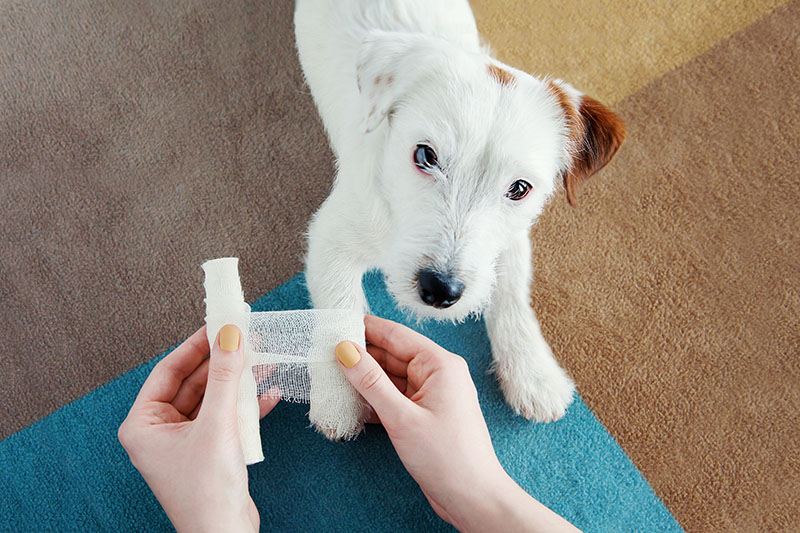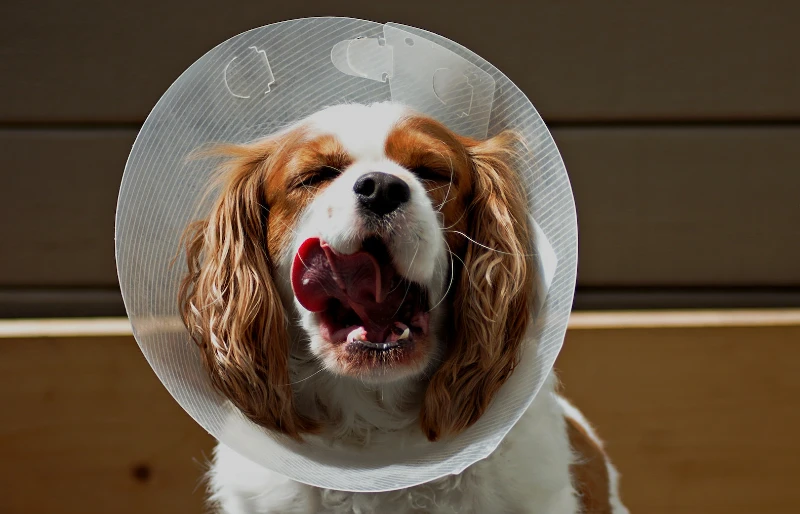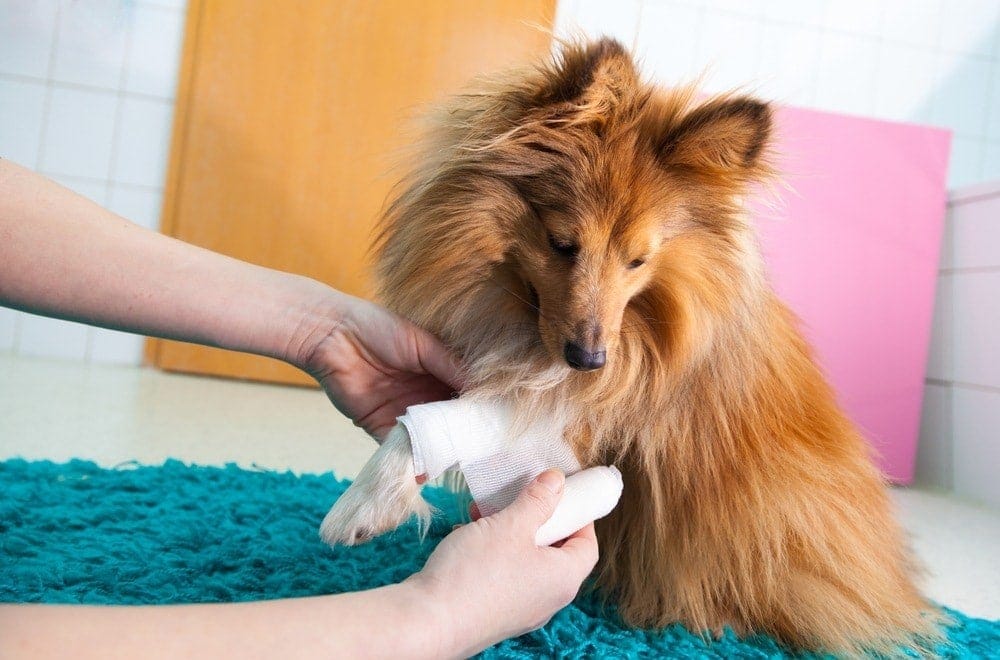Can You Put Neosporin on a Dog? Vet-Reviewed Facts & FAQ Leave a comment
Like humans, dogs can be susceptible to minor injuries like cuts or scrapes. When we get such an injury on ourselves, we’ll reach into our medicine cabinet for an antibiotic ointment like Neosporin to treat our wound and help accelerate healing. Can the same be done for your dog that has a minor injury? The answer is that it truly depends on the situation.
Neosporin can be used on dogs, but it is unsafe for ingestion. The ointment can cause several gastrointestinal side effects if licked off, so it’s best to ask your vet for advice regarding your pup’s wound treatment.
Click to Skip Ahead:

What Is Neosporin?
Neosporin is a topical antibiotic often used in humans to address skin infections and protect wounds from potential infections. It’s commonly used for treating burns, cuts, and scrapes. Some varieties can even be used for pain relief and scar healing.
Neosporin contains three active ingredients: neomycin, polymyxin, and bacitracin. These three ingredients can stop bacteria from growing, preventing infections at the wound site.
Can I Put Neosporin on My Dog?
Using a small amount of antibiotic ointment like Neosporin on your pup can be okay, but only if your veterinarian recommends it. It should only be applied to superficial wounds, so if you’re dealing with a puncture wound or laceration, skip the at-home treatments and go to your vet.
Applying a light layer to a superficial wound can help stave off infection and accelerate healing. However, the ointment should only be used in areas of your dog’s body where it cannot be licked off. Neosporin is unsafe for ingestion and can cause unpleasant gastrointestinal side effects.
If you’ve had a dog or cat before, you know that they often attend to their wounds by diligently licking them. They do this to help soothe the pain and discomfort of their injury. Excessively licking the area overstimulates the brain, temporarily numbing the pain. So, the chances of your dog licking off the Neosporin you’ve applied are high. You can mitigate the likelihood of your pup licking its wound by making your dog wear an Elizabethan collar (sometimes better known as the “Cone of Shame”).
Neosporin may cause localized allergic reactions in some dogs. This may present as red, itchy, or scaly skin. It’s best to apply the ointment to a small “test” skin patch before putting it on your dog’s wound to avoid any potential allergic reactions.
Where Can I Put Neosporin on My Dog?
If your vet gives you the green light to put Neosporin on your pup, follow their instructions to a T. When applied correctly and away from your dog’s ears, eyes, and mouth, the ointment should kill existing bacteria and prevent infection.
Do not apply Neosporin on surgical wounds. Incisions heal best when kept clean and dry; a moist incision site can lead to infections.
Do not apply the ointment to continuously bleeding wounds or those deep enough to require a bandage.


How to Apply Neosporin to Dogs
If your vet suggests you use Neosporin on your dog’s wound, they should also provide you with instructions for doing so. If not, PetMD suggests the following steps for cleaning and treating your pup’s superficial wound.
1. Secure your Pup
Get into a comfortable position with your dog. If it’s a small breed, place it on a cupboard or table in front of you. If it’s a larger pup, get on the floor beside it. You may need to use a muzzle if you feel it is necessary to protect yourself.
2. Shave Excess Hair
If the wound is covered by fur, gently clip the hair around it.
3. Clean the Area
Wash the area with warm water until the surrounding debris is washed away. Pat the area dry with a clean and dry cloth.
4. Apply Antiseptic Solution
Apply an antiseptic solution to the area if your vet recommends one. A 2% chlorhexidine solution is a safe option that can kill unwanted bacteria on the skin.
5. Apply the Neosporin
Apply a very thin layer of Neosporin to the area.
6. Prevent Licking
Prevent your pup from licking the area by applying a loose bandage or e-collar.


What Do I Do If My Dog Licked Off the Neosporin?
Thankfully, licking a bit of Neosporin off its wound is unlikely to cause toxicity in dogs. However, we recommend calling your vet’s office for peace of mind.
Now, if your dog has eaten an entire tube of Neosporin, contact the pet poison control service or your vet immediately. The Pet Poison Helpline suggests that ingesting large amounts of the ointment can produce toxicity signs, including:

When Should My Dog Go to the Vet?
Several injuries require veterinary care and shouldn’t be treated at home. These injuries include:
If you aren’t entirely sure about the severity of your pup’s injury, play it safe and go to your vet. They can quickly recognize signs of infection and determine whether your dog’s wound requires stitches.


Final Thoughts
Neosporin can be applied to wounds, provided your vet has given you the green light. If your dog has a serious injury, such as a laceration or puncture wound, it’s best to leave the treatment to the pros. Neosporin only works on superficial scratches, cuts, or burns and shouldn’t be used on large areas or those that are red, puffy, or discharging pus.
Featured Image Credit: filmbildfabrik.de, Shutterstock


